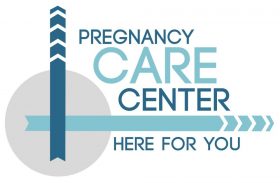Sometimes the terms abortion pill and Plan B are used interchangeably, which can be confusing because they have very different uses and work in different ways. This page will clear up the differences between Plan B and the abortion Pill.
What is Plan B
Plan B is labeled as an emergency contraceptive. This means that its intended use is to prevent a pregnancy from forming if a woman had unprotected sex or contraception, like a condom, failed. Plan B is sometimes called the morning-after pill because it is taken shortly after unprotected sex within a 72-hour window.
Plan B contains a hormone called levonorgestrel which works to prevent or delay ovulation (when a woman’s body releases an egg), prevent an egg from being fertilized, or stop a fertilized egg from implanting in the uterus. How it works will depend on where you are in your menstrual cycle.
Plan B, like every medication, has side effects. Common side effects of Plan B include:
- Nausea or vomiting
- Dizziness
- Fatigue
- Headache
- Breast tenderness
- Bleeding between periods or heavier menstrual bleeding
- Lower abdominal pain or cramps
Women experiencing the following symptoms after using Plan B should reach out to their healthcare provider or seek emergency treatment if they experience any of the following:
- Bleeding or spotting that continues for longer than a week
- Severe pain in the lower abdomen 3-5 weeks after taking Plan B
- Some of these symptoms can also mimic signs of an ectopic pregnancy (the embryo growing outside the uterus or in the fallopian tubes) which can be life threatening.
Plan B is not meant to be used as a regular source of birth control. There are also times that Plan B does not prevent implantation resulting in a continued pregnancy.
What is the Abortion Pill?
Sometimes called medical abortion, the abortion pill is a series of two drugs, mifepristone and misoprostol, that work together to end a pregnancy that has already implanted in a woman’s uterus.
Mifepristone is taken first, usually at an abortion provider’s office. Mifepristone ends the pregnancy by blocking the progesterone the body needs to support a pregnancy. Misoprostol is taken within 48 hours to induce uterine contractions, expelling the pregnancy from the woman’s body.
*Something to consider is how you plan to dispose of the pregnancy. The pregnancy will vary in size and development when expelled depending on its gestational age.
Risks of this abortion procedure can include:
- Incomplete abortion, which may need to be followed by surgical abortion
- An ongoing pregnancy if the procedure doesn’t work
- Heavy and prolonged bleeding
- Infection
- Fever
- Digestive system discomfort
Complications from the abortion pill can become severe if they are not addressed by a medical professional. A woman with the following symptoms should seek medical assistance:
- Heavy bleeding — soaking two or more pads an hour for two hours
- Severe abdominal or back pain
- Fever lasting more than 24 hours
- Foul-smelling vaginal discharge
Want to Know More?
If you have more questions about pregnancy or abortion, we’re here to help. Contact the Pregnancy Care Center to schedule an appointment today.
